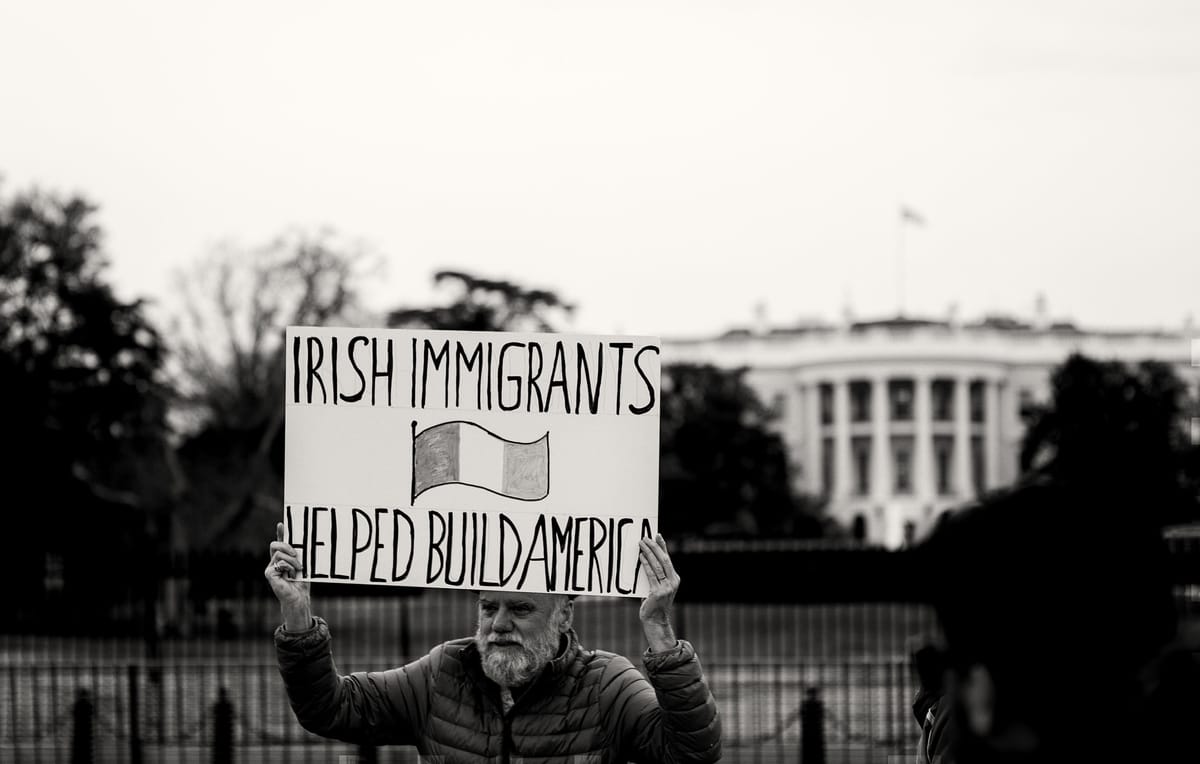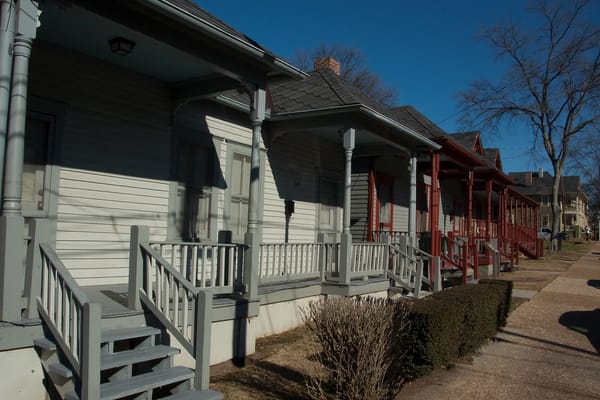Recalling the Irish Diaspora
What if the population of Ireland today was seventy million?

I recently went on a trip to Ireland, spending a week and a half traveling across the country: Dublin, Dún Laoghaire, Kilkenny, Galway, and Inisheer. I experienced the natural beauty of the nation and visited a number of museums and cultural exhibits.
I have Irish heritage, as do many people around the world. In the 1850s, colonialism and oppression led to a famine which caused millions to starve and millions to flee their homes.
I toured the Jeanie Johnston museum, a recreation of one of the many ships that transported Irish emigrants. The guide said that if the diaspora never occurred, Ireland would today have a population of around seventy million. The Irish Emigration Museum next door estimates that there are seventy million people around the world with Irish ancestry.
Ireland stands out as the only country today with a population lower than in 1840. Over the next century, the population fell in half. Even today, there are a million fewer residents of Ireland than at its peak.
The United Kingdom in the same period has seen its population more than double.
It is a huge diaspora relative to its local population. The country has seen long periods of warfare and political turmoil, but has entered a period of stability and economic growth.
This prosperity has brought the country to an inflection point where they must renew their commitment to integration for new immigrants and those returning overseas. The nation faces challenges that must be overcome to cement their place as a leader for prosperity in the twenty-first century.
Housing crisis
Ireland is in the midst of a growing housing crisis. Cities like Dublin in particular have seen a large influx of new residents with a falling number of places to stay. As such, the cost of rent increased roughly 7% since the previous year.
Dublin is a city with history dating back to the twelfth century. Since then it has managed to avoid sprawl endemic in many other places, with a size of just 45.5 square-miles. That's roughly the size of San Francisco or twice the size of Manhattan.
The urban core of the city is very walkable, supplemented by buses and a tram service. The tram has two lines and runs through a few neighborhoods. It is operated by the private company Transdev. As the city grows denser, it will be important to expand public transit to prevent the old streets being ensnared in traffic.
Development is difficult due to a combination of local NIMBYism (Not In My Backyard) and difficulty finding empty lots for infill development. The city has built up much of its area already.
Future development will need to use innovative approaches like this redevelopment at Bow Street, above the Jameson Distillery. They kept the original stone architecture while building modern housing units above it. It creates a unique aesthetic that mixes history with contemporary living.
Dublin's historic urban planning has allowed it to remain walkable and provide residents with stores and services nearby. It has captured the ideal of the fifteen-minute city well.
Nationally, politicians estimate there is a shortage of a quarter of a million units, with only 35,000 being built each year. At the same time, the number of people who are homeless and in emergency shelters keeps rising.
The country's Housing For All plan is facing regular objections from NIMBYs who cite a variety of reasons to oppose development. Yet when just a third of those under forty are homeowners, compared with eighty percent of those over forty, novel ideas must be sought out.
Transit-oriented development
Ireland has a solid rail network which can get you from Dublin across the country to Galway in about three hours.
The inner cores are built up, but minutes out of the city you quickly find yourself in the middle of farmland.
I took this photo out my window a few minutes outside of Kildare, which itself is a very small town near Dublin. The town's population has doubled in the last thirty years but its land use has not improved. Areas that are close to transit, such as a train station, should become focal points for dense, affordable housing.
Transit-oriented development is the urban concept that a half-mile radius, roughly a ten-minute walk, around a transit stop should be high-density mixed-use development. This can help protect the surrounding areas from urban sprawl and encourage sustainable transportation over vehicles. Even the neighborhood around the train station is mostly detached houses.
Kildare's proximity and accessibility to Dublin makes it a great fit for those who don't mind brief commutes every day. The town's population will never approach that of a large city, but people are already moving there. High rents and low supply is going to put strain on the residents and their economic prospects.
Though there are dense cities, the entire island is very sparsely populated. There is a lot of beautiful green space that lends the island's moniker of the "Emerald Isle". Cities have an average population density of 2000 people per square-kilometer. Overall, the country's density is closer to 70 people per square-kilometer.
Ireland has a very strong rail network, and the Dublin & Kingstown Railway made history in 1834 as the first commuter railway. It already has succeeded in allowing people to travel around the country in short spans of time.
As populations grow, the country's land used for settlements has been growing around 1% every 30 years. By adopting TOD principles and focusing on dense, mixed-use development near transit hubs, Ireland can accommodate its growing population sustainably and efficiently, preserving its natural beauty and fostering vibrant communities.
Economics
For decades Ireland has sought out the liberalization of trade among neighboring nations. Brendan O'Regan formed the first duty-free shop at Shannon airport. The economist T.K. Whitaker was instrumental in encouraging the liberalization of trade and laying the foundation for the success they see today.
Broad connections made through the centuries-long Irish diaspora has allowed it in recent years to become the biggest EU destination for foreign direct investment per-capita. Paired with a relatively low tax rate, this has enabled tens of thousands of new jobs to be added every year.
While in Galway I learned about Ireland's economic success in the medical industry. Hundreds of medtech companies operate in Ireland and it forms a large amount of their total exports. This success is rivaled by Singapore, whose capacity for building more housing may enable it to grow and exceed Ireland.
Ireland has served as a world leader in accepting tens of thousands of Ukrainian refugees as the war continues. Emigration has fallen since the 2010s, another sign of the country's economic recovery.
Remote work has played a big role in allowing Irish residents to benefit from the open spaces while still finding high-paying careers. Their train network, paired with transit-oriented development, could easily boost the local economies of small towns.
On my tour I traveled to Inis Oirr, one of the three Aran Islands situated in the oceans west of Ireland. It is a rural, remote community that relies on tourism throughout the summer. I spoke with a woman who hosted tour guides with her father.
The introduction of broadband in 2009 and improving cell service has allowed more people to live and work on the island year-round. Although the island only has 343 residents, that's a 22% increase since 2016. Most of these new residents are family members who otherwise would've left for the mainland.
The people who live on these islands have been getting older, and the country is trying to find ways to attract new residents through a generous incentives program.
However, the meager logistics and housing of the island will need to intensify in a way that meets the needs of the public while preserving the natural beauty. This requires thoughtful policy design ahead of time for gentle density that can limit sprawl.
Ireland as a beacon of prosperity
The Irish diaspora brought millions to new countries, bringing their culture, language, and ideas. Halloween was originally a Celtic holiday. I can step outside my apartment and find ten Irish pubs within a short walk. Each immigrant made their newfound cities brighter.
The last census, performed in 2022, estimated the Irish population to be 5.1 million. That is an increase of half a million since the previous census in 2016. At the current rate, Ireland may reach a record high in its population in the next decade. It would be a great sign of the country's recovery and give every Irish descendent a lot of pride. This would send a message to the world that the country has moved past the Troubles and the centuries of British colonization.
Leaders in Ireland are dealing with a new challenge. If there were 70 million people living there today, the country would have many problems with traffic and housing. No longer do they need to think about recovery, but how to enable the country to thrive and even to lead. They have spent their time focusing on growth, and haven't needed to think much about how to build something new. Their past investments in public transit, economics, and culture have paid off.
Now Irish leaders must strive to create a nation that is prepared for a bright future.
Featured image is Irish Immigrants, by Mike Maguire




